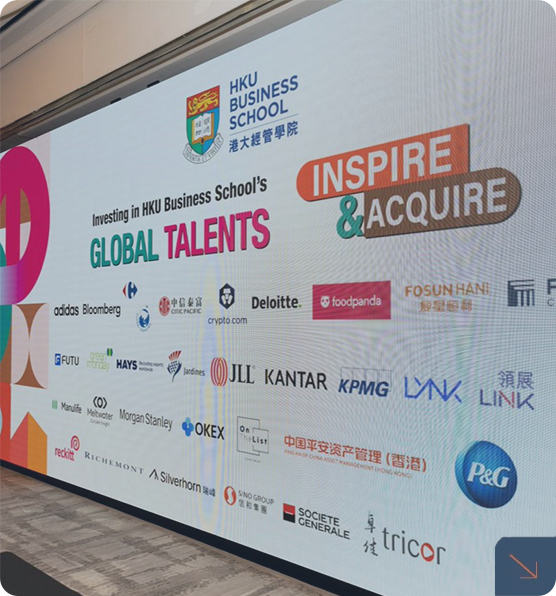Despite workplace anxiety being a common experience of daily work life that is increasingly reliant on technology, we lack knowledge of technology-based job demands that prompt its occurrence. Drawing on theorization on workplace anxiety and integrating literature on information and communication technologies, we consider telepressure and normative response pressure as internal and external between-person sources of daily workplace anxiety. We further present a model of how employees adaptively (vs. maladaptively) respond to workplace anxiety on days they experience workplace anxiety, where anxiety prompts: (a) work e-mail activity, a self-regulatory behavior facilitating performance outcomes; and (b) non-work e-mail activity, a behavior that disengages employees from their work, debilitating performance outcomes. Utilizing a multilevel, time-lagged experience sampling field study across 10 workdays (Level 1 N = 809; Level 2 N = 96), we identify telepressure as a significant contributor of daily workplace anxiety. Further, we found support for an adaptive function of workplace anxiety. On days employees experienced workplace anxiety, their personal initiative and citizenship behaviors were enhanced through behavioral regulatory activity manifested in work e-mail activity. This indirect effect was strengthened for employees perceiving higher (vs. lower) work e-mail centrality. This research advances understanding of the adaptive function of workplace anxiety, such that employees are active drivers of their daily experiences of workplace anxiety.

- PhD University of Toronto
- MA University of Toronto
- BSc University of Toronto
Dr. Cheng obtained her PhD degree in Organizational Behavior and Human Resource Management from the Rotman School of Management, University of Toronto. Her research is dedicated to helping employees achieve and maintain well-being in the workplace. This includes understanding how and when workplace anxiety can enhance performance, recovering from daily job demands, and maintaining proactivity in the workplace. She has published in journals such as Academy of Management Journal, Journal of Applied Psychology, and Journal of Personality and Social Psychology. Her research has been featured in leading media sources such as The Wall Street Journal, Forbes, The New York Times, and Harvard Business Review.
- Leadership and People Management (Executive Education)
- Negotiation and Conflict Management (MGM)
- Workplace Wellness (MGM)
- Dynamics of Multinational Corporations (MGM)
- Corporate Wellness
- Workplace anxiety
- Work recovery
- Proactivity
- Leadership
- Cheng, B. H. (2023). The return on kindness: How kind leadership wins talent, earns loyalty, and builds successful companies. Penguin Random House.
- Zhou, Y., & Cheng, B. H. (2025). The power of acceptance: How and when acceptance influences anxiety and performance at work. Journal of Occupational Health Psychology. Advance online publication. https://doi.org/10.1037/ocp0000398
- Erdogan, B., Kudret, S., Campion, E. D., Bauer, T. N., McCarthy, J. M., & Cheng, B. H. (advance online publication). Under pressure: Employee work stress, supervisory mentoring support, and employee career success. Personnel Psychology. doi: https://doi.org/10.1111/peps.12662
- Li, Y., Cheng, B. H., Yu, B., & Zhu, J. (2024). Let’s get physical! A time-lagged examination of the motivation for daily physical activity and implications for next-day performance and health. Personnel Psychology, 77(2), 917–955.
- Cheng, B. H., Zhou, Y., & Chen, F. (2023). You’ve got mail! How work e-mail activity helps anxious workers enhance performance outcomes. Journal of Vocational Behavior, 144, 103881.
- Cheng, B. H. & Li, Y. (2023). To improve your work performance, get some exercise. Harvard Business Review.
- Wong, M. H.*, Cheng, B. H.*, Lam, L., & Bamberger, P. A. (2023). Pay transparency as a moving target: A multi-step model of pay compression, i-deals, and collectivist shared values. Academy of Management Journal, 66(2), 489–520. doi: https://doi.org/10.5465/amj.2020.1831
*Equal contribution
- Lam, L., Cheng, B. H., Bamberger, P., & Wong, M.- N. (2022). Research: The unintended consequences of pay transparency. Harvard Business Review.
- Meister, A., Cheng, B. H., Dael, N., & Krings, F. (2022). How to recover from work stress, according to science. Harvard Business Review.
- Sonnentag, S., Cheng, B. H., & Parker, S. L. (2022). Recovery from work: Advancing the field toward the future. Annual Review of Organizational Psychology and Organizational Behavior, 9. doi: https://doi.org/10.1146/annurev-orgpsych-012420-091355
- Ouyang, K., Cheng, B. H., Lam, W., & Parker, S. K. (2019). Enjoy your evening, be proactive tomorrow: How off-job experiences shape daily proactivity. Journal of Applied Psychology, 104(8), 1003-1019. doi: http://dx.doi.org/10.1037/apl0000391
- Cheng, B. H. & McCarthy, J. (2018). A theory of workplace anxiety. Harvard Business Review.
- Cheng, B. H., & McCarthy, J. M. (2018). Understanding the dark and bright sides of anxiety: A theory of workplace anxiety. Journal of Applied Psychology, 103(5), 537-560. doi: http://dx.doi.org/10.1037/apl0000266
- McCarthy, J. M., Trougakos, J. P., & Cheng, B. H. (2016). Are anxious workers less productive workers? It depends on the quality of social exchange. Journal of Applied Psychology, 101(2), 279-291. doi: http://dx.doi.org/10.1037/apl0000044
- Trougakos, J. P., Beal, D. J., Cheng, B. H., Hideg, I., & Zweig, D. (2015). Too drained to help: A resource depletion perspective on daily interpersonal citizenship behaviours. Journal of Applied Psychology, 100(1), 227-236. doi: http://dx.doi.org/10.1037/a0038082
- Trougakos, J. P., Hideg, I., Cheng, B. H., & Beal, D. J. (2014). Lunch breaks unpacked: The role of autonomy as a moderator of recovery during lunch. Academy of Management Journal, 57, 405-421. doi: http://dx.doi.org/10.5465/amj.2011.1072
- Cheng, B. H., & McCarthy, J. M. (2013). Managing work, family, and school roles: Disengagement strategies can help and hinder. Journal of Occupational Health Psychology, 18(3), 241-251. doi: http://dx.doi.org/10.1037/a0032507
- Côté, S., Kraus, M. W., Cheng, B. H., Oveis, C., van der Löwe, I., Lian, H., & Keltner, D. (2011). Social power facilitates the effect of prosocial orientation on empathic accuracy. Journal of Personality and Social Psychology, 101(2), 217-232. doi: http://dx.doi.org/10.1037/a0023171
- Piff, P. K., Kraus, M. W., Côté, S., Cheng, B. H., & Keltner, D. (2010). Having less, giving more: The influence of social class on prosocial behaviour. Journal of Personality and Social Psychology, 99(5), 771-784. doi: http://dx.doi.org/10.1037/a0020092
Book Chapters
- McCarthy, J. M., & Cheng, B. H. (2018). Through the looking glass: Employment interviews from the lens of job candidates. In U. Klehe & E. van Hooft (Eds.), Handbook of job loss and job search. Oxford: Oxford University Press.
- Latham, G. P., Cheng, B. H., & Macpherson, K. (2012). Theoretical frameworks for and empirical evidence on providing feedback to employees. In R. M. Sutton, M. J. Hornsey, & K. M. Douglas (Eds.), Feedback: The communication of praise, criticism, and advice. 187-201.
- Faculty Teaching Innovation Award (2024)
- Outstanding Practical Implications for Management Paper Award, OB Division, Academy of Management (2022)
- Champion for Women Award Finalist, Women of Influence, American Chamber of Commerce (2022)
- Women of Wellness Award: Corporate Wellness, Liv Magazine (2021)
- AMJ Best Reviewer Award (2021)
- Faculty Knowledge Exchange Award (2021)
- Faculty of Business Teaching Award (2019)
- Center for Leadership & Innovation (CLI) Research Fellow Award (2017)
- Best Paper Award in OB Division, Australia/New Zealand Academy of Management (2016)
- Outstanding Reviewer Award, OB Division, Academy of Management (2015)
- Best Competitive Conference Paper in OB Division, Academy of Management (2011)
- Outstanding Reviewer Award, OB Division, Academy of Management (2011)
- Associate Editor: Academy of Management Perspectives
- Editorial Board Member: Academy of Management Journal; Personnel Psychology; Journal of Organizational Behavior
Drawing from research on the transparency-privacy dilemma in management, we theorize that firm-level pay transparency elicits a multistep process involving managers and employees that shifts the dispersion in remuneration from more to less observable forms, thus making pay transparency a “moving target.” We posit a serial indirect effect of pay transparency on firm-level rates of i-deal grants (a less observable form of remuneration) via variable pay compression and heightened rates of employee i-deal requests, with this indirect effect amplified in firms characterized by collectivist shared values. First examining the role of managerial agency and collectivist shared values in the pay transparency–compression relationship in a simulation-based experiment, we test the overall model in a multisource field study using a sample of 111 medical device distribution firms. Our findings demonstrate that: (a) firm-level pay transparency is predictive of greater pay compression, (b) firm-level rates of i-deal grants are largely explained by this pay compression via its effects on employee i-deal requests, and (c) this sequential effect is amplified in firms with more collectivist shared values. Accordingly, we explicate how transparency triggers unintentional hiding, and suggest that accompanying more transparent pay may be an increased reliance upon rewards that, by their very nature, are less transparent.





